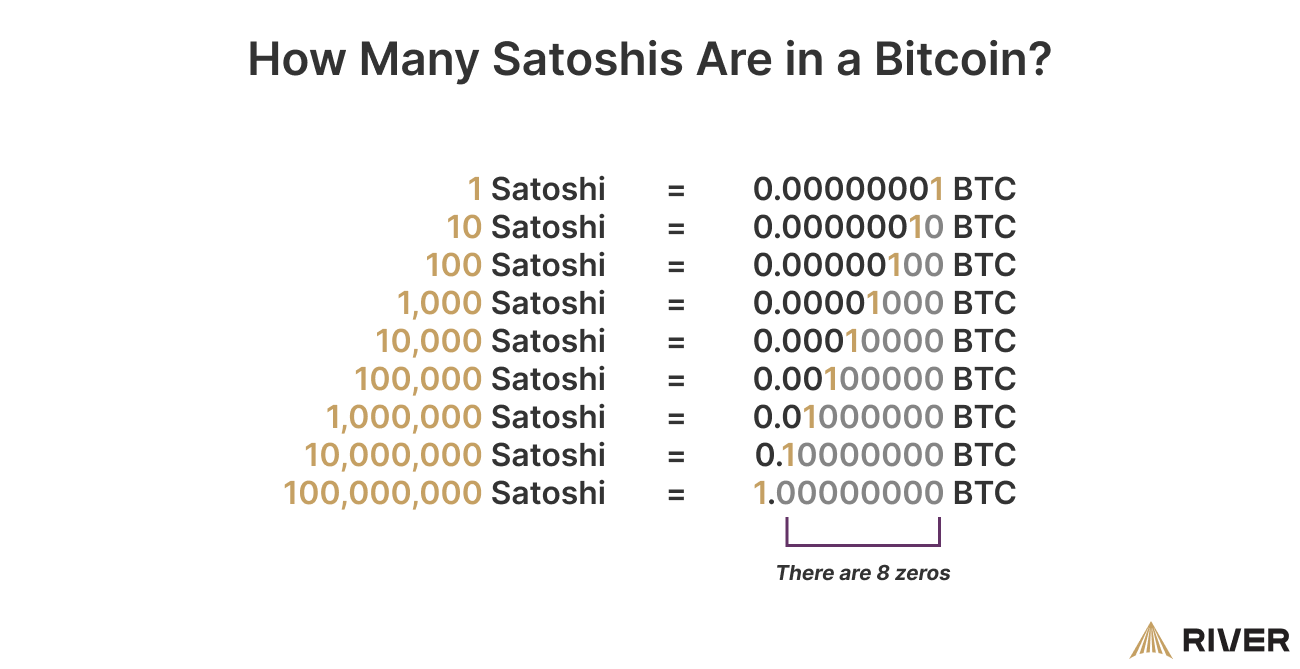Bitcoin’s complicated decimals might soon be history if a new plan to redefine the base unit as the real “Bitcoin” gets adopted.
Bitcoin (BTC) has always had a little quirk that confuses even longtime users: the way it’s measured. Officially, one Bitcoin equals 100 million “base units” — also called “satoshis” or “sats” — but in the industry, it’s usually discussed in decimals, like 0.0001 BTC or 0.345 BTC. This setup, while familiar, can sometimes be a bit of a mess. And now, there’s a proposal on the table that might just shake things up.
The idea behind BIP-0177, submitted by Synonym.to CEO John Carvalho and Bitcoin developer Mark “Murch” Erhardt, is pretty simple: it wants to flip the whole system on its head by redefining one Bitcoin to actually mean one base unit. That means the smallest indivisible unit of Bitcoin would become the main reference point.
No more decimals, no more fractions — just whole numbers. So what used to be “1 Bitcoin” (or 100 million base units) would become 100 million Bitcoins, and what the industry used to think of as a satoshi would simply be called a Bitcoin.
The proposal may seem unconventional, but its backers argue it could help clarify much of the confusion surrounding Bitcoin’s underlying structure as the update “aims to simplify user comprehension, reduce confusion, and align on-chain values directly with their displayed representation,” the proposal says.
Decimal mindset
Currently, Bitcoin’s ledger records all transactions in discrete, indivisible units — whole numbers. The decimals commonly used are human-imposed abstractions, comparable to imagining that a dollar consists of a billion tiny cents. According to the proposal, this has fostered a “persistent decimal mindset” that misrepresents how Bitcoin actually works.
In their own words, the current convention “requires dealing with eight simulated decimal places, which can be confusing and foster the misconception that bitcoin is inherently decimal-based.”

So, by redefining the base unit as “one Bitcoin,” BIP-0177 aims to align the displayed values with the underlying structure of the network. This change would eliminate the need to interpret small decimal values, such as 0.000001 BTC, and instead present all amounts as whole numbers.
To give an example, something that today displays as 0.00010000 BTC would become ₿10,000, or just 10,000 Bitcoins under the new system. Ten Bitcoins today? That would be ₿1,000,000,000 or one billion Bitcoins. The currency code BTC remains unchanged, so when someone says 1 BTC, they still mean the old standard of 100 million base units. But in user interfaces and apps, the new “Bitcoin” would be the base unit.
‘Will reduce clarity’
This switch isn’t mandatory, though. Applications would be able to offer toggles between the old decimal system and the new integral one, easing users into the change. The proposal even suggests using the ₿ symbol optionally to represent the base-unit bitcoin.
MNEE CEO Ron Tarter agrees that removing the decimal place will be easier for everyday people to understand, but warns about naming confusion.
“Removing the decimal place will be easier for everyday people to understand. However, the name of the base unit should either stay as ‘sats’ or be renamed to a word that is not already being used to describe a sum of BTC. That will reduce clarity rather than enhance it. Whether you call it a“sat” or something else, most new users still need someone to explain what it is and why owning a small piece of Bitcoin/BTC is valuable. That confusion doesn’t go away with a rename.”
Ron Tarter
The motivation behind BIP-0177 isn’t just about aesthetics. The BIP team argues that the shift would:
- Simplify mental arithmetic by using integers only, which could reduce user errors.
- Align user perception with how Bitcoin actually works, counting whole units, not decimals.
- Make it easier to teach newcomers about Bitcoin, by removing a confusing decimal layer.
Future-proof Bitcoin’s units for growth and adoption, avoiding the need for more denominations or decimals down the line.
There’s also a bit about perception. Since the total supply of base units is about 2.1 quadrillion, the new counting method makes Bitcoin’s supply look huge. But the proposal points out this is just a representation change, not a supply increase. It’s similar to how currencies like the Japanese yen or Indonesian rupiah have high unit counts, but nobody thinks of those as inflated.
Cleaner fix
Not everyone agrees with BIP-0177’s approach. An alternative, BIP-176, suggested using “bits” — each bit being one-millionth of a Bitcoin (or 100 satoshis) — to reduce decimal places. But BIP-0177’s authors think that still keeps you stuck in the decimal mindset. Bits just shift the problem around, forcing users to juggle multiple denominations (BTC and bits).
They say the “bits” proposal “does not realign the displayed value with the integral nature of Bitcoin’s ledger,” adding that “it continues to rely on fractional units, masking the fundamental integer-based accounting that Bitcoin employs.” In other words, BIP-0177 sees itself as a cleaner, more durable fix by cutting out fractions altogether.
GoMining CEO Mark Zalan told crypto.news that Bitcoin’s biggest challenge in the coming crypto cycle is moving beyond its role as a store of value — often called “digital gold” — toward becoming a true medium of exchange. He believes that increased transaction activity on the Bitcoin network will drive mass adoption and multiply Bitcoin’s value many times over.
“We believe this innovation may be a move in the right direction: it makes it easier for users to pay and manage balances in hundred-millionth units. Whether this fraction is called a satoshi or a bit is ultimately a matter of preference. Overall, the proposal is useful.”
Mark Zalan
Zalan stressed that mass adoption hinges on solving two key issues: instant transaction confirmation, which is necessary for supporting a broad network of point-of-sale terminals, and keeping transaction fees low.
One tricky part is the term “satoshi” or “sat,” which many in the community love. It’s a nod to Bitcoin’s mysterious creator Satoshi Nakamoto, and “stacking sats” has become a meme. The proposal acknowledges that, saying that “while culturally valuable, the term introduces an implicit second denomination layer that contradicts the goal of this BIP.”
The MNEE CEO says “sats” have become part of Bitcoin’s culture, adding that “it’s in the memes, the language of the community, and even the behavioural framing — people don’t just buy Bitcoin anymore, they ‘stack sats.’”
He adds that while this debate may seem cosmetic, the cost is deeper than it appears. At best, it’s a lateral move in usability; at worst, it adds confusion and friction by forcing the community to relearn its own vocabulary. Tarter suggests that if renaming is necessary, the community might as well pick a name that actually signals meaning, like “fracks,” short for fractions, but really, “sats already work — and Bitcoin already earned that branding through adoption. Why change it away now?”
Ideological shift
The proposal doesn’t ban the word, but it does push for using “Bitcoin” as the sole unit in wallets, exchanges, and documentation to keep things simple and consistent.
Tarter cautions that changing the name from “sat” to “Bitcoin” could make things more confusing for users. He noted that people are “already used to 100,000,000 satoshis being equal to 1 Bitcoin,” adding that “hundreds of millions of people are familiar with this framework.”
“If you start referring to 1 satoshi as being 1 Bitcoin, that will obviously be confusing for a lot of people. Frankly, most users aren’t asking for a new name — they’re asking for clearer interfaces, simpler conversions, and fewer barriers to using Bitcoin in real life.”
Ron Tarter
This change wouldn’t alter Bitcoin’s blockchain or its consensus rules; it’s purely a shift in how values are displayed. The underlying ledger would continue to operate in base units as it always has. Implementing the new system would require developers to update user interfaces, APIs, and documentation, while adoption would involve a period of adjustment to viewing large whole numbers instead of decimals.
That said, there are some concerns about confusion during the transition. People used to decimals might think their holdings suddenly jumped or shrank. To avoid that, the BIP recommends dual displays, tooltips, and clear education to help folks understand the equivalence.
Interestingly, some wallets, like Bitkit, have already tried showing Bitcoin amounts as integers, and the experience has been smooth. The proposal lays out a phased approach to adoption:
- In the first 3-6 months, roll out dual displays and educational materials in pilot apps.
- Over 6-12 months, more services adopt integer-only displays by default, supported by community coordination.
- After a year or more, the integer format becomes the norm, and references to decimal Bitcoin fade away.
Whether the Bitcoin community embraces this new way of thinking remains to be seen.

